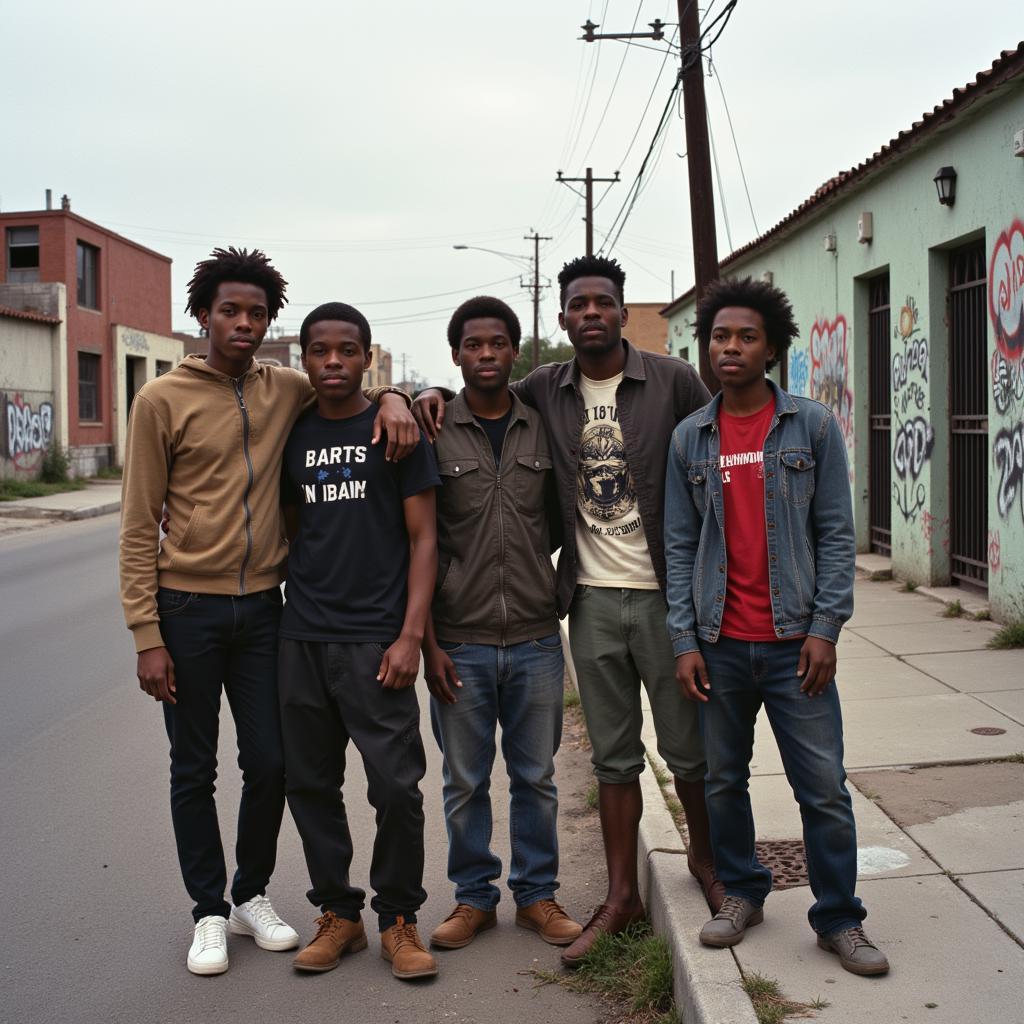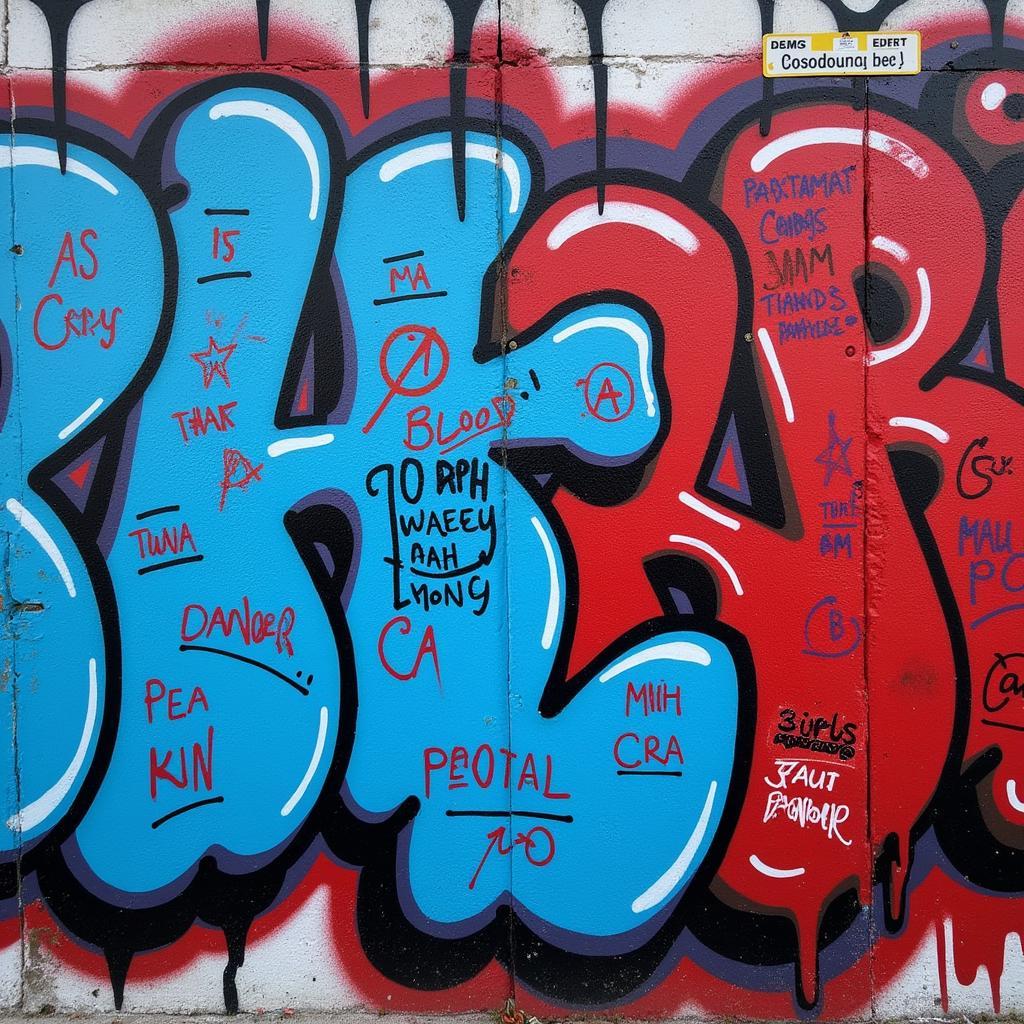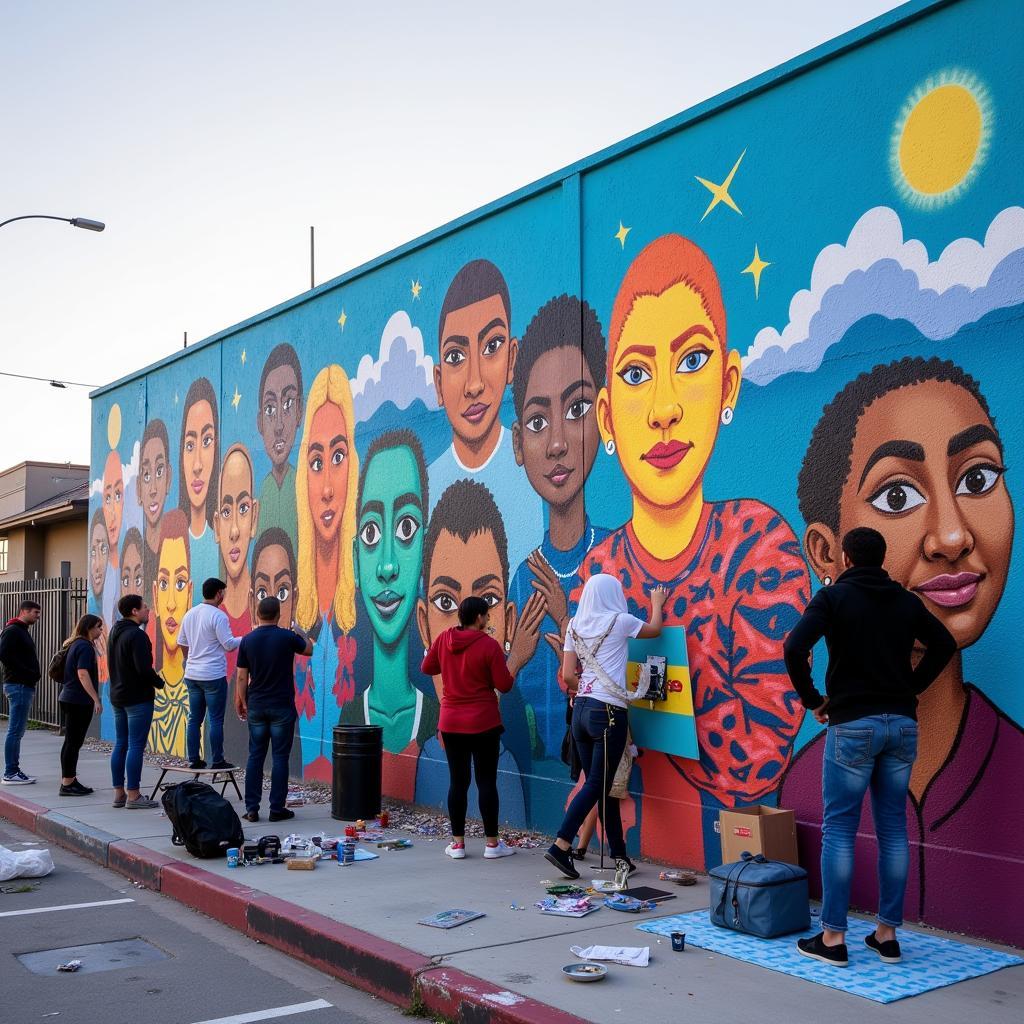African American Gangs in Los Angeles: A Complex History
African American Gangs In Los Angeles have a long and complicated history, rooted in socio-economic factors and racial tensions. Their presence dates back to the early 20th century, evolving alongside the city’s changing demographics and social landscape. This article explores the factors contributing to their emergence, their impact on the African American community, and efforts to address gang violence.
 African American Youth in South Central Los Angeles
African American Youth in South Central Los Angeles
The Rise of African American Gangs in Post-War Los Angeles
Following World War II, a large influx of African Americans migrated to Los Angeles seeking economic opportunities and escaping the Jim Crow South. However, they encountered widespread discrimination in housing, employment, and education, leading to concentrated poverty and social unrest in areas like South Central Los Angeles.
This marginalization created fertile ground for the emergence of gangs, which provided a sense of belonging, protection, and identity for disenfranchised youth. Early gangs like the Slausons and the Businessmen emerged during this period, often engaging in turf wars and petty crime.
The Crack Cocaine Epidemic and Escalating Violence
The 1980s witnessed a dramatic escalation in gang violence with the arrival of crack cocaine. The drug’s low cost and highly addictive nature flooded the streets of South Central, fueling gang rivalries over drug turf and profits. The emergence of notorious gangs like the Crips and Bloods, recognizable by their distinct blue and red colors, respectively, further intensified the violence.
 Crips and Bloods Graffiti in Los Angeles
Crips and Bloods Graffiti in Los Angeles
Drive-by shootings, drug trafficking, and gang-related homicides became rampant, devastating the social fabric of South Central Los Angeles. The media often portrayed these gangs through a narrow lens, fueling negative stereotypes and perpetuating fear.
Beyond the Headlines: The Human Cost and Complex Realities
While it’s crucial to acknowledge the very real impacts of gang violence, it’s equally important to move beyond simplistic narratives and understand the multifaceted realities of those involved.
“It’s not just about choosing a color or seeking power,” explains Dr. Monica Sanchez, a sociologist specializing in gang intervention programs. “For many young people, gangs provide a surrogate family, a support system in an environment where they feel invisible and powerless.”
Many gang members are victims of circumstance, grappling with poverty, trauma, lack of opportunities, and exposure to violence from a young age. Their stories highlight the systemic failures that contribute to gang involvement and the urgent need for holistic solutions.
Shifting the Narrative: Intervention, Prevention, and Community Empowerment
Addressing the issue of African American gangs in Los Angeles requires a multi-pronged approach that goes beyond law enforcement. Community-based organizations play a critical role in providing alternatives to gang life, offering mentorship programs, educational support, job training, and conflict resolution initiatives.
Former gang members are also instrumental in reaching out to at-risk youth, drawing on their lived experiences to deter them from following the same path. Their involvement in grassroots organizations and intervention programs offers valuable insights and credibility in engaging with those most vulnerable to gang recruitment.
 Community Mural Project in South Central Los Angeles
Community Mural Project in South Central Los Angeles
A Legacy of Resilience and Hope
The history of African American gangs in Los Angeles is a complex and often tragic one. However, within these communities lies an enduring spirit of resilience and a commitment to breaking the cycle of violence. By investing in education, economic opportunities, and community-based solutions, there’s hope for a future where young people are empowered to choose different paths and contribute to a safer, more equitable Los Angeles.
FAQs
1. What were some of the factors that led to the rise of African American gangs in Los Angeles?
Several factors contributed to their emergence, including racial segregation, discrimination in housing and employment, lack of economic opportunities, and concentrated poverty in areas like South Central Los Angeles.
2. What role did the crack cocaine epidemic play in escalating gang violence?
The influx of crack cocaine in the 1980s fueled gang rivalries over drug turf and profits, leading to a significant increase in violence, drug trafficking, and homicides.
3. What are some of the initiatives aimed at addressing gang violence in Los Angeles?
Efforts include community-based intervention programs, mentorship initiatives, educational support for at-risk youth, job training, and conflict resolution programs.
Explore Further
To learn more about the themes explored in this article, check out:
- African American Rap Artists: Explore the role of hip-hop in reflecting and shaping the realities of gang culture.
- African American Gangster Books: Delve into fictional and non-fictional accounts that provide deeper insights into the complexities of gang life.
Need Help or Have Questions?
We’re here to help! Contact us at:
- Phone Number: +255768904061
- Email: kaka.mag@gmail.com
- Address: Mbarali DC Mawindi, Kangaga, Tanzania.
Our dedicated customer support team is available 24/7 to assist you.

